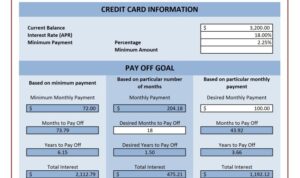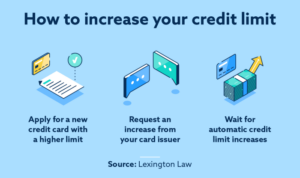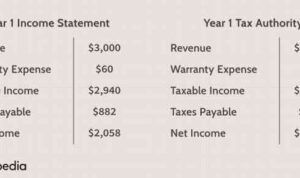Get ready to dive into the world of Savings account options, where your money can work harder for you. From high-yield to regular accounts, we’ll break down the different types and help you navigate the best options for your financial goals.
Types of Savings Accounts
When it comes to saving that hard-earned cash, there are a few different types of savings accounts to choose from. Each type comes with its own set of features, benefits, and drawbacks that you should consider before making a decision.
Regular Savings Account
A regular savings account is a basic account offered by banks and credit unions. It typically has a low interest rate, making it a safe option for those looking to save without taking on much risk.
- Low minimum balance requirements
- Easy access to funds
- Limited interest earnings
High-Yield Savings Account
A high-yield savings account offers a higher interest rate compared to a regular savings account. This can help your money grow faster over time, but usually comes with some conditions like higher minimum balance requirements.
- Higher interest rates
- Potential for faster savings growth
- May require higher minimum balance
Money Market Account
A money market account combines features of a savings and checking account, offering higher interest rates than a regular savings account. However, there are often more restrictions on withdrawals and higher minimum balance requirements.
- Higher interest rates than regular savings
- Check-writing capabilities
- Limited number of transactions allowed per month
Interest Rates
When it comes to choosing a savings account, one of the key factors to consider is the interest rate offered. Interest rates can significantly impact the growth of your savings over time, so it’s important to understand how they work and where to find the best rates.
Interest rates vary among different savings account options, with some offering higher rates than others. For example, high-yield savings accounts typically offer higher interest rates compared to traditional savings accounts. It’s essential to compare and contrast the interest rates offered by various banks or financial institutions to ensure you’re getting the best return on your savings.
Comparing Interest Rates
- High-yield savings accounts tend to offer higher interest rates than traditional savings accounts.
- Certificate of Deposit (CD) accounts may offer fixed interest rates for a specific term length.
- Online banks often provide competitive interest rates due to lower overhead costs.
Impact on Savings Growth
Interest rates play a crucial role in determining how fast your savings will grow over time. Higher interest rates mean your money will earn more interest, leading to accelerated growth of your savings. On the other hand, lower interest rates may result in slower growth and less return on your savings.
Remember, the power of compound interest can significantly boost your savings over the long term, so it’s important to maximize your interest rate.
Finding the Best Rates
- Compare interest rates offered by different banks or credit unions.
- Consider online banks that often provide higher interest rates due to lower operating costs.
- Look for promotional offers or special rates for new customers.
- Regularly review and switch accounts if you find better interest rates elsewhere.
Minimum Balance Requirements
When it comes to savings accounts, minimum balance requirements play a crucial role in determining the account holder’s experience. Let’s dive into the details of minimum balance requirements for different types of savings accounts and explore strategies for managing them effectively.
Savings Account Types and Minimum Balances
- Basic Savings Account: Typically has a low minimum balance requirement, ranging from $0 to $25.
- High-Yield Savings Account: Requires a higher minimum balance, often starting at $500 or more.
- CD (Certificate of Deposit) Account: Requires a fixed minimum balance for a set period, usually ranging from $500 to $10,000.
Impact of Minimum Balance Requirements
Failure to maintain the minimum balance in your savings account can lead to monthly maintenance fees or even account closure. This can result in financial penalties and impact your overall savings goals.
Strategies for Managing Minimum Balance Requirements
- Regularly monitor your account balance to ensure compliance with the minimum requirement.
- Set up alerts or notifications to avoid falling below the minimum balance threshold.
- Consider consolidating funds or automating transfers to maintain the required minimum balance.
- Opt for savings accounts with lower minimum balance requirements if you’re unable to meet higher thresholds.
Fees and Charges
When it comes to savings accounts, it’s important to be aware of the various fees and charges that may apply. These fees can have a significant impact on your overall savings, so it’s crucial to understand them and know how to avoid or minimize them.
Common Fees and Charges
- Monthly Maintenance Fee: This fee is charged by some banks if certain conditions are not met, such as maintaining a minimum balance or making a minimum number of transactions.
- Excess Withdrawal Fee: Some savings accounts limit the number of withdrawals you can make per month. If you exceed this limit, you may be charged a fee for each additional withdrawal.
- ATM Fee: Using an ATM outside of your bank’s network may result in a fee, both from the ATM operator and your bank.
- Overdraft Fee: If you withdraw more money than you have in your account, you may be charged an overdraft fee.
Impact on Overall Savings
These fees can eat into your savings over time, reducing the amount of interest you earn and potentially causing you to lose money. It’s important to consider these fees when choosing a savings account to ensure they align with your financial goals.
Tips to Avoid or Minimize Fees
- Choose a savings account with no monthly maintenance fees or find ways to waive the fee, such as maintaining a minimum balance.
- Monitor your withdrawal activity to avoid exceeding the limit and incurring excess withdrawal fees.
- Use ATMs within your bank’s network to avoid ATM fees.
- Set up alerts or notifications to track your account balance and avoid overdrawing.
Online Banking Options
Online banking features are essential for savings accounts in today’s digital age. They provide convenience, accessibility, and security for managing your funds anytime, anywhere.
Benefits of Online Banking
- 24/7 Access: With online banking, you can check your account balance, transfer funds, and track your savings goals at any time of the day or night.
- Convenience: Say goodbye to long lines at the bank. Online banking allows you to handle all your savings transactions from the comfort of your home or on-the-go with a mobile app.
- Automatic Savings Tools: Many online banking platforms offer automatic savings features such as round-up transactions or recurring transfers to help you grow your savings effortlessly.
Online Banking Tools for Savings Accounts
- Mobile Banking Apps: Access your savings account on your smartphone or tablet for easy management on the move.
- Online Budgeting Tools: Utilize budgeting features within online banking to set savings goals, track your progress, and monitor your spending habits.
- Alerts and Notifications: Receive real-time alerts for account activity, low balances, upcoming bills, or goal achievements to stay on top of your savings game.
Accessibility and Convenience

When it comes to choosing a savings account, accessibility and convenience play a crucial role in managing your finances effectively. Factors like ATM access, branch locations, and mobile banking apps can greatly impact your overall banking experience. Here are some tips on selecting a savings account that offers optimal accessibility and convenience.
ATM Access
- Look for a savings account that provides a wide network of ATMs where you can withdraw cash without incurring extra fees.
- Consider the fees charged for using ATMs outside of your bank’s network, as this can add up over time.
- Check if your savings account offers reimbursement for ATM fees, which can help you save money in the long run.
Branch Locations
- Choose a bank with branch locations that are convenient for you, whether it’s close to your home, workplace, or frequent destinations.
- Having easy access to a physical branch can be helpful for tasks that require in-person assistance, such as depositing large sums of cash or seeking financial advice.
- Consider the operating hours of the branches to ensure they align with your schedule.
Mobile Banking Apps
- Opt for a savings account that offers a user-friendly mobile banking app with features like mobile check deposit, bill payment, and account monitoring.
- Ensure the app is secure and easy to navigate, with options for setting up alerts and notifications for account activity.
- Look for additional features like budgeting tools, savings goal trackers, and the ability to easily transfer funds between accounts.
Customer Service and Support
Good customer service is crucial when it comes to savings accounts. It ensures that account holders feel valued, respected, and supported throughout their banking experience. Customer support plays a significant role in addressing any concerns, resolving issues promptly, and providing guidance on financial matters.
Examples of Excellent Customer Service Practices
- 24/7 customer support helpline for immediate assistance
- Personalized account management services for tailored solutions
- Quick response times to inquiries and feedback
- Regular communication on account updates and promotions
- Professional and friendly staff interactions for a positive experience






